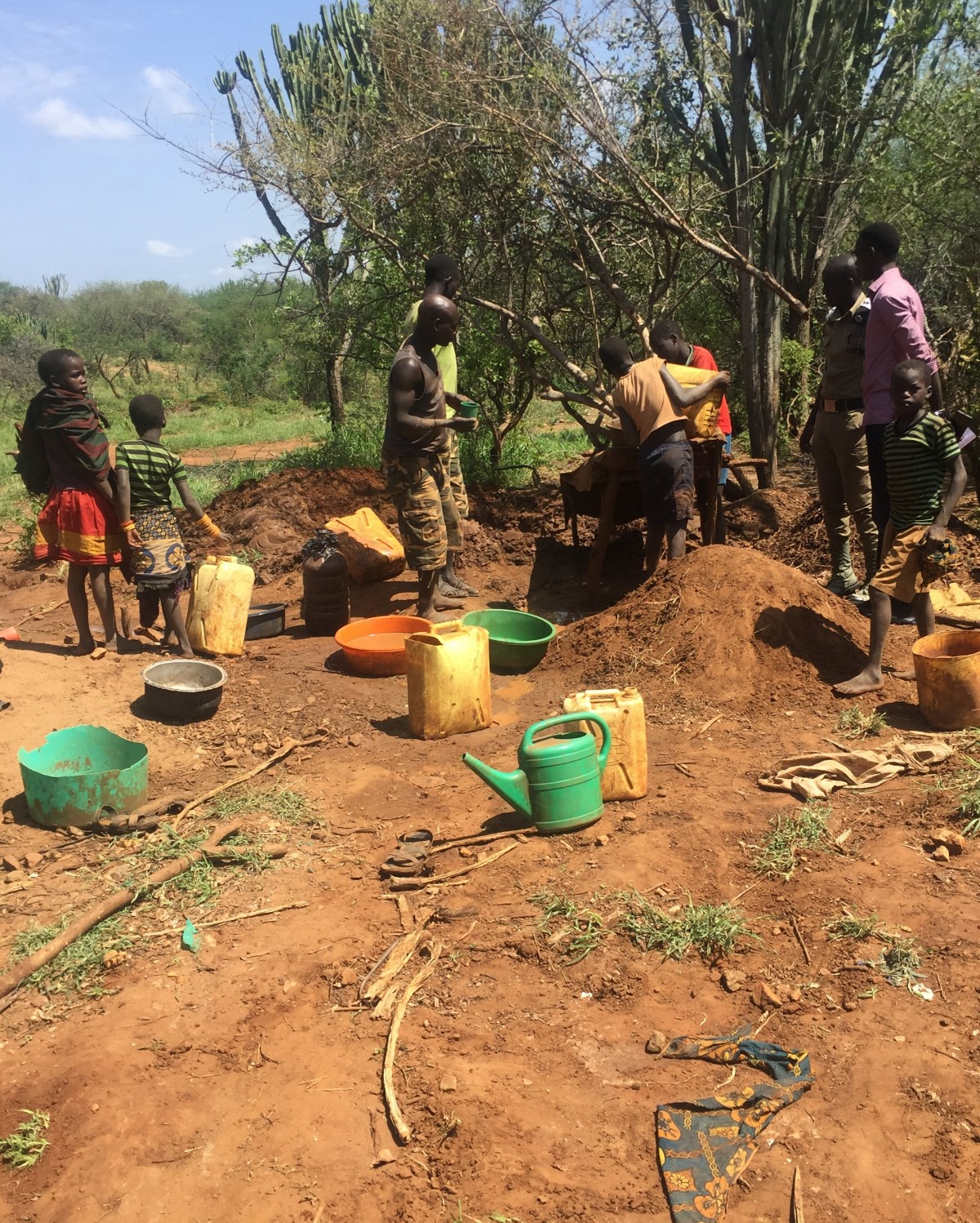
Setting the Platform for Reduction of mercury use in Karamoja mines
Mercury use in artisanal and small-scale gold mining has negative effects on human health and the environment. Prolonged and high exposure to mercury by inhalation damages the nervous, digestive, and immune systems. When ingested, mercury can accumulate in living organisms, and cause serious damage to the nervous system after it reaches high levels. In Moroto, the current gold rush has resulted in considerably large mercury emissions. Mercury is used to recover minute pieces of gold that is mixed in soil and sediments. Mercury and gold settle and combine together to form an amalgam. Gold is then extracted by vaporizing the mercury. To reduce the use of mercury and the subsequent health impact to gold miners and local inhabitants, knowledge and awareness in the community should be increased.
In December 2019, we rolled out an awareness raising program to evaluate the level of knowledge on mercury, potential routes of exposure, health risks for children versus adults, mercury related health effects, reproductive risks and effects on the environment. in partnership with Avocats Sans Frontières. together with the community-based volunteers. Before the volunteers engaged with the miners, they were carefully selected and trained on several concepts that ranged from dangers of mercury use to cleaner and safer alternative practices. The objective is to help artisanal gold miners reduce and or eliminate the use of mercury in gold mining, and reduce harmful risks to their health and the environment
This move came at a time when across the country, from Mubende to Busia and Karamoja, thousands of Ugandans, including children and women, have increasingly flooded small gold mines in the quest of a living. Artisanal Small-Scale Gold Mining (ASGM) is the largest use of mercury in the world. Mercury emissions to air from ASGM are estimated at 727 tonnes annually, making this the largest emitting sector, accounting for more than 35% of global man-made air emissions. Additionally, over 800 tons are reportedly released directly to aquatic systems according to the Technical Background Report for the Global Mercury Assessment 2013 by UNEP. The small-scale gold mining industry is a vital source of income, though on the other hand very dangerous as there is a creeping threat of mercury which is used across the country to those that eke a living in the gold mines.
In Loolung, a small-scale gold mining site located in Rupa Sub County, we saw with our own eyes how miners, including children mix the mercury into the ore with their bare hands, create a gold-mercury amalgam, and then burn the amalgam over an open flame. This in ignorance has shimmering effects on the health and lives of these miners.
Some children are exposed to mercury from the moment there are in their mother’s wombs as some children lamented how they have always suffered from consistent headaches and dizziness. Awosit Marita one of the women miners said that she didn’t know that mercury was dangerous and to what extent the exposure may have on her health. She narrates how her vision has been deteriorating and how she can barely write something due to the increased shaking of her hands, clear symptoms of mercury exposure. The primary health effect of mercury is impaired neurological development. Therefore, cognitive thinking, memory, attention, language, and fine motor and visual spatial skills may be affected in humans most especially children who were exposed to mercury as foetuses.
Beyond the health risks, mercury affects the aquatic life and causes toxic pollution to water sources and soils which bioaccumulates and biomagnifies especially in the aquatic ecosystem. Recent evidence suggests that mercury is responsible for a reduction of micro-biological activity vital to the terrestrial food chain in soils over large parts of Europe – and potentially in many other places in the world with similar soil characteristics, according to the Global Mercury Assessment Report 2018.
Growing concerns about gold mining induced mercury contamination, which led to international actions, including the Minamata Convention in 2013 which came officially into force on 16 August 2017. Article 16 of this convention relates to human health and it encourages identifying all possible human populations affected by mercury pollution, adopting health guidelines to regulate mercury exposure, and providing education about the risks of mercury exposure. The government of Uganda on Friday March 1,2019 deposited its instrument of ratification pledging her contribution towards reducing release of mercury to the environment according to Ecogreen News.
Under the socio-economic and political conditions found in the small-scale gold mining operation, the use of mercury is often considered as the easiest and most cost-effective solution for gold separation. However, this program sought to educate the miners on the alternatives of mercury, despite the dangers it has on their health and environment. Gold is heavier than most other particles, so alternative methods typically use motion or water to separate the gold from lighter particles. These include panning, sluicing, chemical leaching and smelting.
Recommendations
As Uganda moves towards curbing the rate of mercury exposure, policies need to strongly be revised. In for example, the draft Mining and Minerals bill 2019, formalization and regularization of the sector should be a major part towards the major cause of mercury reduction. Along with funding community initiatives, the complex political and economic incentives that drive mercury trade and mercury use must as well be addressed. Baseline information about, for example, knowledge levels and mercury exposures in different gold mining sites in the country, is key in formulating effective strategies towards tackling mercury emissions.
A signatory to the convention has obligations to undertake in reducing and where feasible eliminating, the use of mercury and mercury compounds in ASGM. As part of these is developing a National Action Plan (NAP) which contains national objectives and reduction targets, specific actions to eliminate the worst practices, steps to formalize or regulate ASGM among others. The draft Mining and Minerals bill 2019 ment
Dangers of Hg use-Article.pdf





